ASUS M4A89GTD Pro - A Core Unlocking 890GX for $140
by Rajinder Gill on March 10, 2010 12:00 AM EST- Posted in
- Motherboards
The gaming/performance figures tell a familiar story:
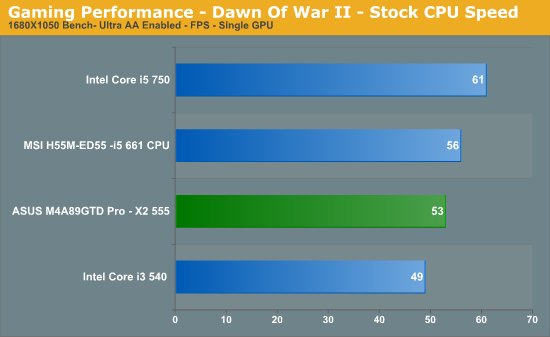
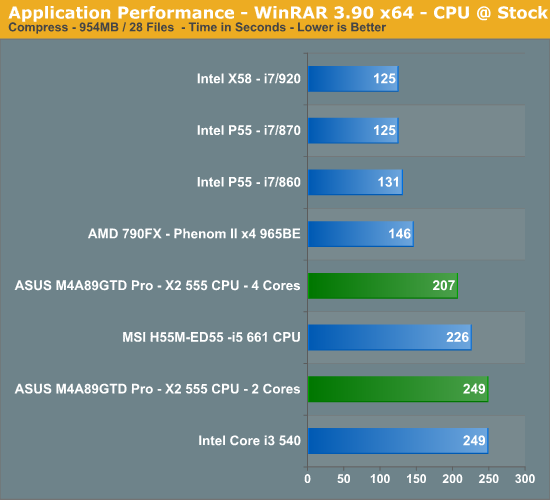
Power Consumption
Our power consumption testing utilizes the same batch of components under similar circumstances in a bid to monitor variances between idle and CPU load conditions. We install the vendor supplied power saving utilities on each board and enable power saving modes that don't involve any kind of underclocking or CPU core frequency modulation in order to run an apples to apples comparison.
ATX PSU switching losses are absent from our figures because we monitor power consumption directly at the DC rails of the PSU. Total system power consumption will vary depending upon the efficiency of your PSU.
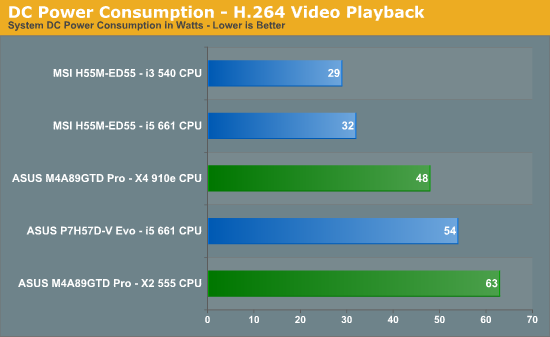
While AMD processors can’t keep up with Intel’s for power consumption, the M4A89GTD Pro turns in a respectable performance against ASUS’s ATX sized Intel equivalent P7H57D-V Evo. The X2 555 falters slightly in these tests due to a high stock VID of 1.35V. The soon to be released X4 910e operates at 2.6GHz with 4 cores with a 65w TDP hence the lower consumption numbers.
You can under-volt the X2 555 somewhat to reduce its power draw, although we found our sample was not capable of running at 3.2GHz at a VID lower than 1.25V. As a quick experiment, we overclocked the 910e to 3.2GHz whilst maintaining a 1.15V VID and it came through our benchmark suite without a problem - whilst pulling only a few extra watts of power. The X4 910e is definitely a superlative bin.
DPC Audio Latency
We’re often asked to include a DPC latency screenshot by audio enthusiasts, here’s what the M4A89GTD Pro manages:
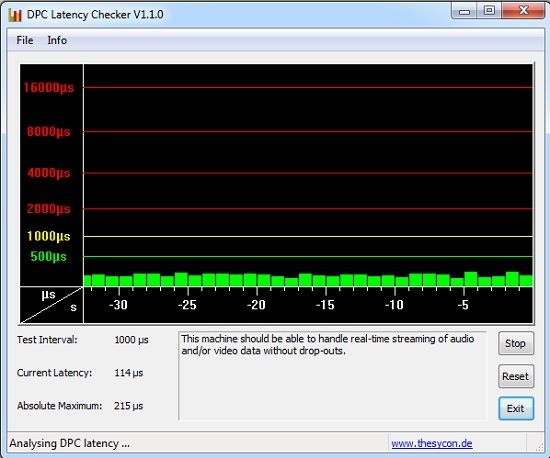
Overclocking
Although we managed to hit target frequencies with all of our processors, the most exciting processor to overclock out of the bunch was the X2 555. Unlocked to 4 cores, we ended up with a stable 301 base clock; a shade over the 4GHz mark running 8GB of our Corsair Dominator GT’s @ CAS 6-7-6-20 1T DDR3-1604MHz:
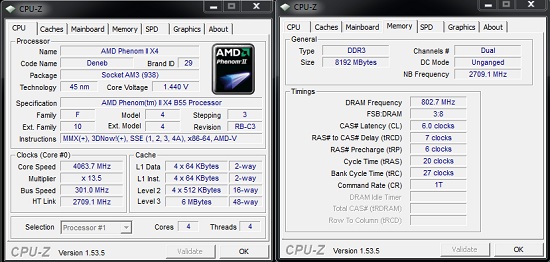
For those that like to benchmark and chase numbers for fun, base clocks up to 390MHz are possible if you use Turbo-V to increase bus speed within Windows (POST maximum up appears to be limited around 370 MHz).
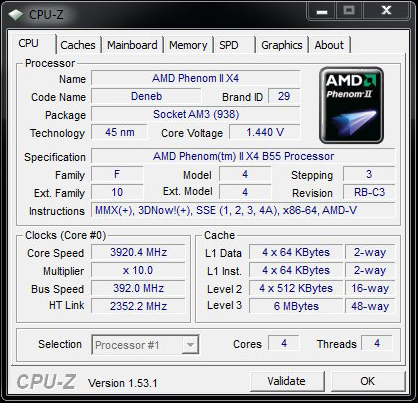
It’s a pretty good show from ASUS considering the Hyper modules are rather picky about operating parameters on this motherboard. Using more ‘realistic’ modules, expect to see 4GB maximums fall in the region of DDR3-1800~1900 MHz at CAS 8, while good 8GB kits should hit the DDR3-1800MHz mark on the 0402 BIOS.










46 Comments
View All Comments
deputc26 - Wednesday, March 10, 2010 - link
I am extremely happy that you decided to include a dpc latency screenshot, I am not a true audiophile I just hate stuttering audio, would be great if you could include this on laptops as welll where it is more often an issue.Ben90 - Thursday, March 11, 2010 - link
Are there computers out there that actually have problems streaming real time audio? The results look the same as my $400 laptop purchased around 2003.alm4rr - Sunday, May 9, 2010 - link
Was a memory module compatibility list ever published for this board?Thx
chillmelt - Sunday, July 4, 2010 - link
These benchmarks are unfair. The AMD processor's worth less than a hundred pitted against Intel's cores at much higher value? Even a Phenom II X4 965 costs less than an i5 750 and it's nowhere to be seen on these benchmarks....doylecc - Sunday, July 4, 2010 - link
This is an interesting review, but it seems more like a processor review. This review should have compared the performance of several AMD-compatible MOTHERBOARDs using several popular AMD processors--say 665, 630 and 555--so that we can make informed MB purchasing decisions. We already know about the performance of Intel and AMD processors from their respective reviews. Let's keep motherboard reviews focus on comparing motherboards.oktam - Thursday, July 15, 2010 - link
Does anyone know if it is possible to use IGP on ASUS M4A89GTD board in CrossFire with GPU Radeon 5770 and connect together 5 displays?2 displays connected to IGP, 3 displays to GPU. All via DVI (via reductions).
Thanks!